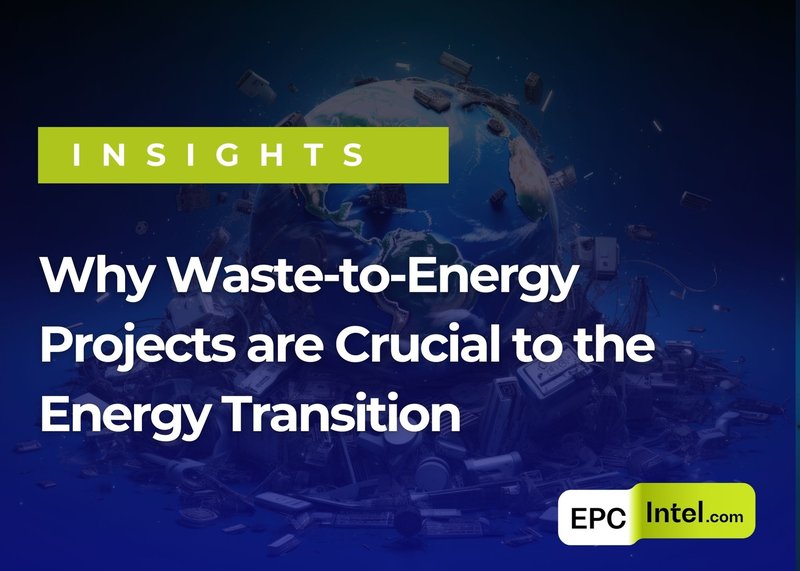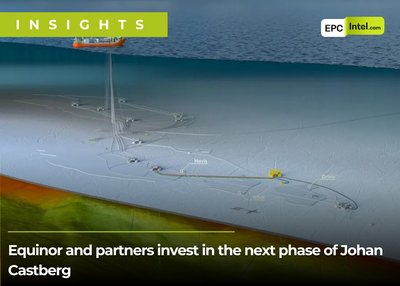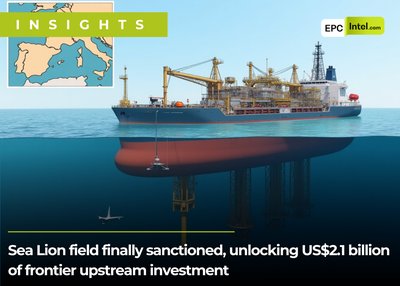The global energy landscape is undergoing a significant transformation, with countries around the world striving to decarbonize their energy systems to combat climate change. As part of this shift, waste-to-energy (WTE) projects are gaining momentum as a sustainable solution to manage waste while producing renewable energy. Waste-to-energy technologies not only reduce the volume of waste destined for landfills but also convert it into electricity, heat, or biofuels. In this insight, we explore the importance of waste-to-energy projects in the broader context of the energy transition, their environmental and economic benefits, and their role in achieving net-zero targets.
The Role of Waste-to-Energy in the Energy Transition
Waste Management and Energy Production
One of the key challenges in modern society is the growing volume of municipal solid waste (MSW). According to the World Bank, global waste generation is expected to rise from 2.01 billion tonnes per year in 2016 to 3.40 billion tonnes by 2050. This mounting waste problem presents a serious environmental and health challenge. Waste-to-energy projects potentially address this issue by converting waste into valuable energy resources.
Traditional waste management methods, such as landfilling, contribute significantly to greenhouse gas (GHG) emissions, particularly methane, which is 25 times more potent than carbon dioxide over a 100-year period. In contrast, WTE facilities utilize waste as a feedstock for energy generation, reducing the reliance on fossil fuels and mitigating methane emissions from landfills.
WTE plants use a variety of technologies, including incineration, anaerobic digestion, and gasification, to transform waste into usable forms of energy like electricity, heat, or biogas. This energy can be fed into local power grids or used to supply heat to district heating networks. By converting waste into energy, WTE projects help close the loop on the circular economy, promoting resource efficiency and sustainability.
Reducing Greenhouse Gas Emissions
A critical component of the global energy transition is the need to drastically reduce GHG emissions to limit global warming to 1.5°C above pre-industrial levels. Waste-to-energy projects contribute to this effort by reducing the carbon footprint associated with both waste management and energy production.
WTE plants are designed to capture the emissions produced during waste combustion, including CO₂ and other pollutants, using advanced emissions control technologies. In many cases, carbon capture and storage (CCS) systems can be integrated into WTE facilities, further reducing their environmental impact. Additionally, WTE projects produce fewer emissions compared to traditional waste disposal methods and fossil-fuel-based energy generation, making them a cleaner alternative.
Furthermore, WTE projects help to displace fossil fuels like coal and natural gas in the energy mix. This is especially important for countries that rely heavily on coal-fired power plants, as WTE can provide a low-carbon alternative to base-load power generation. In doing so, WTE projects support a gradual phase-out of carbon-intensive energy sources.
Contributing to Circular Economy Goals
In a circular economy, materials are kept in use for as long as possible, and waste is minimized through resource recovery and recycling. Waste-to-energy projects are a key component of this strategy, as they recover energy from materials that cannot be easily recycled or repurposed.
For example, not all municipal waste can be recycled, especially when it is contaminated with food waste, hazardous materials, or other substances that make traditional recycling processes ineffective. In such cases, WTE projects provide an efficient way to recover value from this residual waste. By converting non-recyclable waste into energy, these facilities help to reduce the volume of waste that ends up in landfills, contributing to zero-waste goals.
In addition to energy recovery, some WTE facilities also generate by-products like biochar, which can be used as a soil amendment, or ash, which can be repurposed in construction materials. This ensures that as much value as possible is extracted from the waste stream.
Enhancing Energy Security
Energy security remains a critical concern in the context of the energy transition. While renewable energy sources like solar and wind are crucial for decarbonization, their intermittent nature presents challenges for grid stability and reliability. Waste-to-energy plants offer a continuous and reliable source of power, complementing other renewable energy technologies.
WTE plants can operate 24/7, providing baseload power and ensuring energy supply during periods of low wind or sunlight. This makes WTE an important part of a diversified energy mix, helping to stabilize the grid and reduce dependence on imported fossil fuels. Countries that invest in WTE projects are better positioned to achieve energy independence, as they can convert their domestic waste into energy, reducing their reliance on external energy sources.
Economic Benefits and Job Creation
Waste-to-energy projects not only offer environmental benefits but also drive economic growth. These facilities generate local employment opportunities, both during construction and operation. According to industry estimates, a typical WTE plant creates hundreds of jobs in engineering, construction, operations, and maintenance, as well as indirect jobs in supply chains and logistics.
In addition to job creation, WTE projects stimulate economic activity by generating revenue streams from energy sales, tipping fees from waste disposal, and by-products. The electricity and heat produced by WTE plants can be sold to local utilities, contributing to the local economy. Furthermore, WTE projects can attract investment in green infrastructure, aligning with governmental policies that promote clean energy development.
Supporting Net-Zero and Decarbonization Goals
Many countries and corporations have set ambitious net-zero targets, aiming to eliminate or offset their carbon emissions by mid-century. Waste-to-energy projects play a key role in achieving these goals by providing a carbon-neutral or low-carbon alternative to traditional energy sources.
In addition to reducing emissions from landfills and waste disposal, WTE projects can be integrated with carbon capture and storage (CCS) technology to capture CO₂ emissions from the combustion process. This makes WTE a potential source of negative emissions, helping to offset residual emissions from other sectors.
Moreover, WTE plants contribute to energy diversification, reducing the reliance on fossil fuels and supporting the broader energy transition toward renewable and low-carbon energy sources.
Conclusion
In the face of mounting waste generation and the urgent need to reduce carbon emissions, waste-to-energy projects are becoming an indispensable part of the global energy transition. By converting waste into a valuable energy resource, WTE facilities help address waste management challenges, reduce greenhouse gas emissions, and support the circular economy. They provide reliable, continuous energy, enhance energy security, and contribute to the achievement of net-zero targets.
As WTE technology continues to evolve, its potential to play a significant role in the future energy mix grows.
To stay informed about the latest developments in waste-to-energy projects and to explore valuable information, visit EPCIntel.com, a trusted source for comprehensive data and analysis on energy infrastructure projects.




